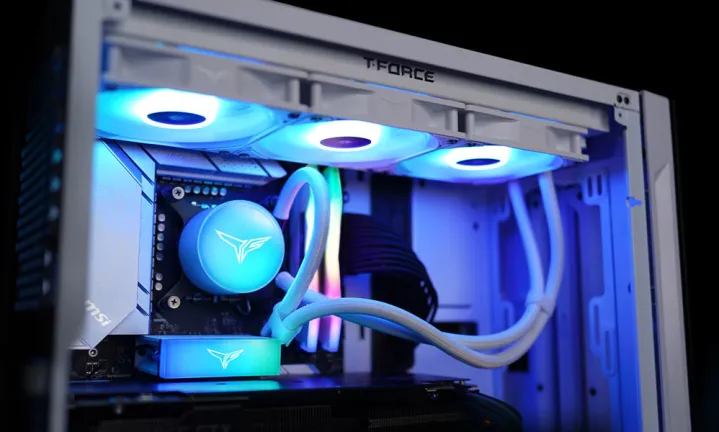
Your CPU can probably run hotter than you think. In the past, 70 degrees might have set off some warning bells in your mind and within the confines of your PC. But modern processors are designed to run much closer to their thermal maximums when working on demanding tasks, and they can quite comfortably sit there for extended periods of time without it causing any problems.
That’s not to say you want to redline your CPU all day every day, and there are definitely some advantages to running your CPU cooler than it can technically reach. But to do that, you need to know how hot your CPU can run, and ultimately, how hot is too hot for your CPU.
How hot can your CPU run?
While we can’t provide an exhaustive list of every processor and their maximum temperatures, the good news is, we don’t have to. Both AMD and Intel publish maximum safe temperatures for their processors on their respective websites, so we can look at a few examples, and if your CPU isn’t covered, you can easily look it up yourself.
The first step is to check what CPU you have, which is an important place to start.

Intel’s Core i9-14900K is its current flagship processor and is designed to run hot, with a maximum power draw in excess of 250 watts at full load. Looking at its official product page, we can see its “max operating temperature” is listed at 100 degrees Celsius. It does note that this is based on temperature sensor readouts, and that it’s possible that for very short periods of time, a higher threshold will be reached, but in generalk 100 degrees is the maximum for this CPU.
Indeed, it’s the maximum for most modern Intel processors. Taking a look at a much more modest processor, the Core i3-12100, which has a TDP of just 60W, it also has a maximum operating temperature of 100 degrees — though even with a basic cooler, you’d struggle to get it anywhere near that.
As for AMD, the maximum safe temperatures there are much the same. The flagship 16-core Ryzen 9 7950X has a listed maximum safe temperature of 95 degrees. The more modest Core i5 7600X also has a maximum operating temperature of 95 degrees.
Of note, however, is that AMD’s unique X3D processors can’t handle quite so much heat. The 7800X3D, the best gaming CPU in the world at the time of this writing, has a maximum temperature of just 89 degrees.
So, whether you’re running one of the best coolers or just the stock one that came with the CPU, you should be absolutely fine, even if your CPU is reaching close to 100 degrees when you really push it.
How hot should your CPU run?
Just because your Intel CPU can run at 100 degrees, or your AMD CPU is able to run at 95 degrees, is that a good idea? The answer is, it depends. If your temperatures are carefully controlled and you don’t mind your processor hitting its absolute redline, then it’s not a problem in and of itself. If your CPU ever gets too hot, it will just lower its performance to ensure it doesn’t damage it or any other components.
However, if you want to maximize performance, keep noise levels low, extend the life of your hardware, and reduce your energy bill, then you should absolutely avoid your CPU running at its maximum temperatures consistently. You should also only be seeing these kinds of high temperatures when you’re really pushing your CPU hard. If you’re seeing high idle temperatures, you may need to clean out your PC or replace the cooler.

If your processor regularly hits its thermal limits, you’re going to see performance degradation, too. At high temperatures, your cooler and system fans are likely spinning up to their fastest states, resulting in a lot of unneeded noise. Computer components also tend to have shorter lives if they run hot all the time, rather than at more manageable temperatures.
With all that in mind, it can be well worth keeping your CPU cool enough that it doesn’t hit its maximum temperature thresholds all too often. There is no magic number that you should run your CPU at, but if you have a good enough cooler, most modern processors shouldn’t be going much over 80 degrees during average heavy load tasks.
There are certain CPUs, like the 13900K and 14900K, which are hard to cool, no matter what cooler you have, but that’s where undervolting and underclocking can come into play.
Editors' Recommendations
- Delidding your CPU: What it is and why you should do it
- How a rumored CPU might embarrass the PS5
- It just became the perfect time to buy a last-gen Intel CPU
- I’ve reviewed every AMD and Nvidia GPU this generation — here’s how the two companies stack up
- How to change your router’s Wi-Fi password



